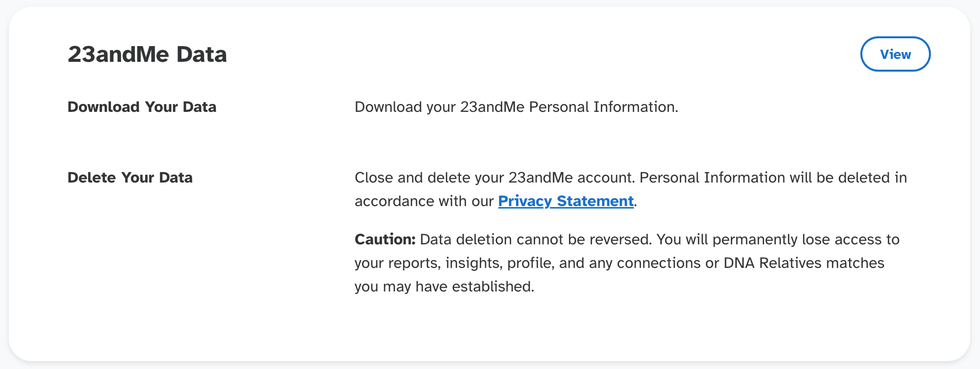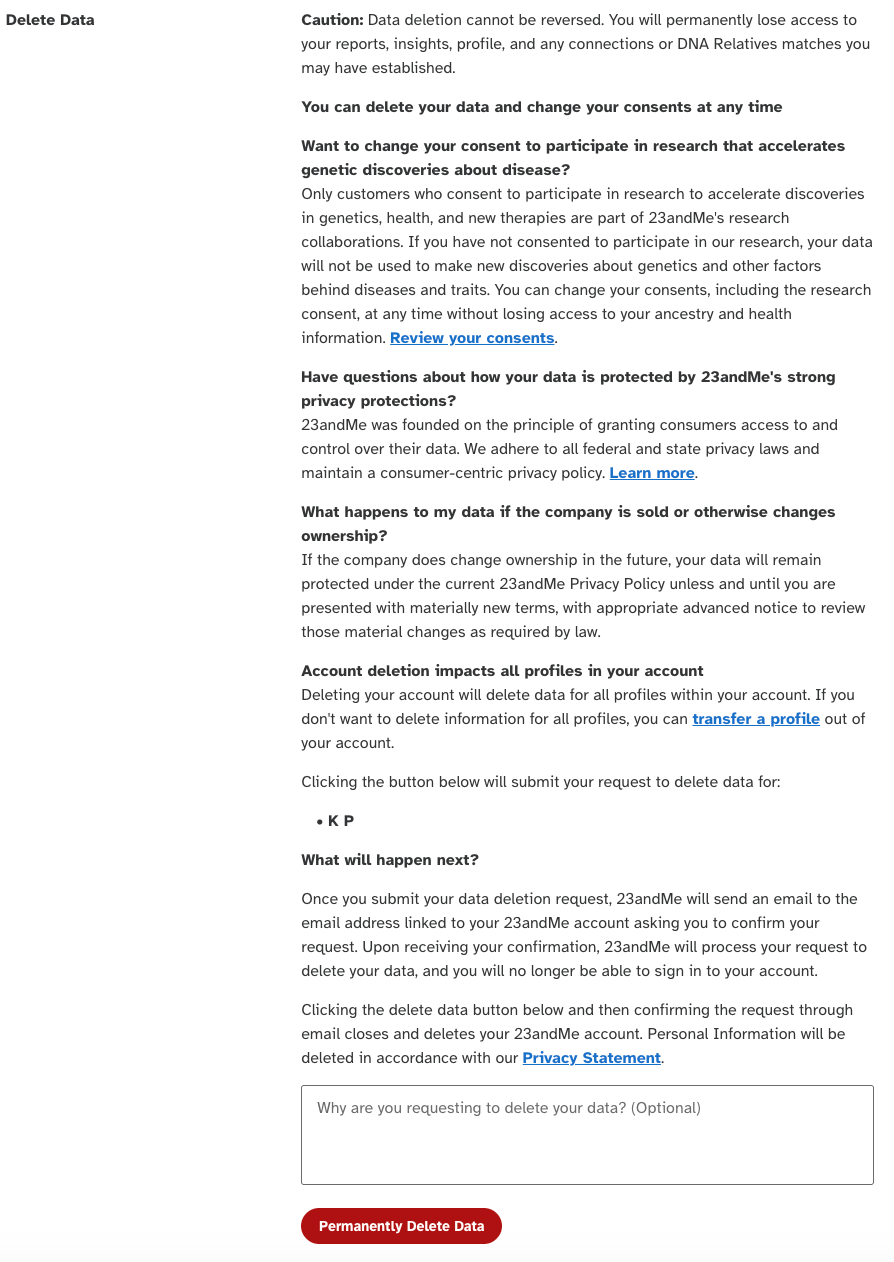Not too long ago, it seemed like everyone knew someone who sent their saliva off to a company with the hope of mapping out their ancestry, checking for risky genetic mutations or connecting with long-lost relatives. But interest has dropped in recent years and 23andMe, one of the most popular DNA-testing companies, just announced it filed for bankruptcy.
What will happen to your data if you already handed over your name, birthday and email or sent your DNA to 23andMe for testing? You will continue to have access to existing reports and “the Chapter 11 filing does not change how we store, manage, or protect customer data” the company stated in an open letter to its customers. It also pointed out that any company that purchases 23andMe will need to comply with the law when it comes to protecting your data.
However, the new company that comes in may not be one that you trust and even if it is, things don’t always go according to plan, so you may still be worried about your personal data being mishandled. Fortunately, if you decide you no longer want to use 23andMe’s services, the process to remove your data from its database is pretty straightforward.
Keep in mind that if you choose to delete your account, your slate doesn’t get wiped completely clean immediately. The company and/or its contracted genotyping laboratory will hold on to your genetic information, birthdate, sex, email address and more for a period of time to fulfill “legal obligations,” according to its privacy policy. When Good Housekeeping asked 23andMe what specific personal information it retains and for how long, the company ignored the question.
If you have privacy concerns, proactively deleting the data that you can is probably the safest bet. Just remember that you can’t “undo” this — any data and profiles linked to your account will also be removed, and there’s no way to get it back later on. “If you asked us to store your genetic samples, they will be discarded,” the company says. “If you opted in to 23andMe Research, your Personal Information will no longer be used in any future research projects. Data cannot be removed from research that’s already been conducted.”
How to remove your data from 23andMe
1. First, sign in to your account at 23andMe.com. Then click the little circle with your initials in it in the top right corner, and select “Settings” in the drop-down menu.
2. Scroll down to the bottom of the next screen until you get to a section called “23andMe Data.” Then click the button on the right that says “View.”
3. You’ll be prompted to enter your birthdate as an extra security measure.
4. In the top half of the next screen, you can choose to download your data before you delete it. At the bottom, there’s a “Permanently Delete Data” button. Once you click that button, you’ll receive an email to confirm your choice.
5. In the email 23andMe sends you, there will be a button labeled “Permanently Delete All Records” and you’ll have 24 hours to click it.
FYI: You can email customercare@23andme.com if you have any issues.
How to protect your data in the future
23andMe’s bankruptcy filing brings to light a concern that exists well beyond the genetic testing industry: The average person trusts an awful lot of companies to keep their personal information safe. “It really doesn’t matter what company — any company can be hacked and your information can be leaked,” says Alec Scherma, the Good Housekeeping Institute’s mechanical engineer. “The best thing I believe you could do is use something like LifeLock or Allstate Identity Protection. These services track your information and alert you if they see any information on the dark web so you can then take action.”
While you’re at it, use a different password for every account you own and instead of writing them down, save them in a password protector like LastPass. Scherma also recommends keeping track of the information that you share so you know what might be out there. “Assume there’s always a chance for your data to be leaked, so figure out what steps you should take in case it happens — before it happens,” he says.
















